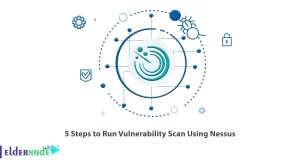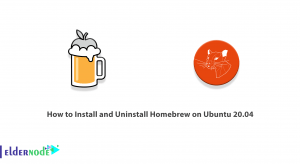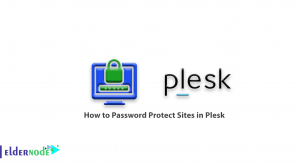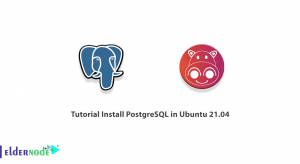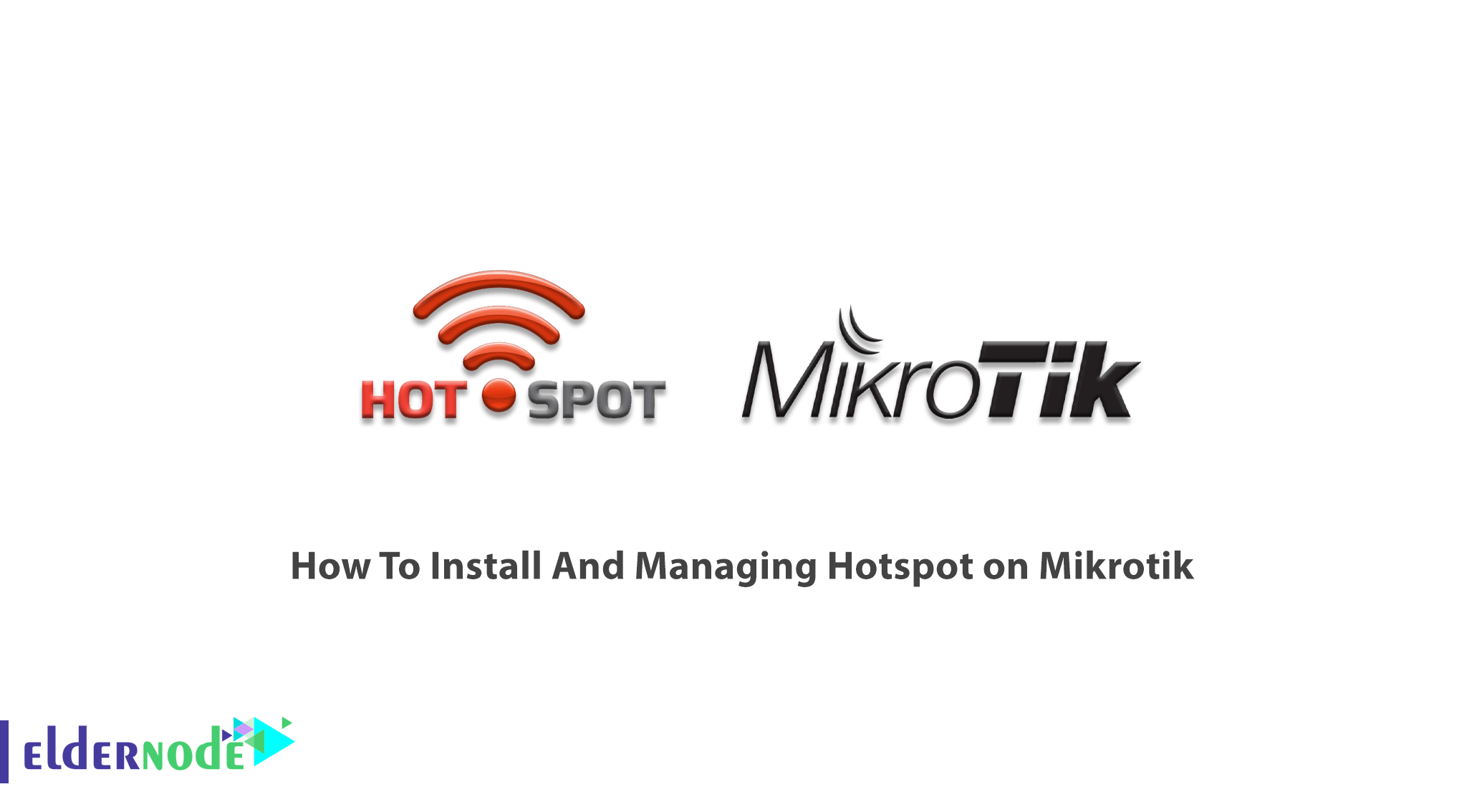
previously, you have read various related subjects about Mikrotik. Without needing to log in or startup, you can use Mikrotik as a powerful router to increase boot speed and provide an automatic performance. You can install Mikrotik the server based on the Linux kernel on a computer and services. In this article, you will learn How To Install And Manage Hotspot on Mikrotik. Also, to provide a Mikrotik VPS server, the packages of Eldernode are available with the best price and support.
Table of Contents
Tutorial Install And Manage Hotspot on Mikrotik
Join us to see what is Hotspot and the way of its configuration and settings on the router. You can set up a Hotspot for any environment. Notice that it would be better if you use the Wizard mode to set up the Hotspot to keep your access to the router. In the following of this guide, you will read a description of the TLS Certificate. Also, you would find out why SMTP Server and DNS Server are defined and what structure should be used to define DNS name. To see the parts that are created dynamically after the Hotspot is activated continue reading till the end.
How To Setup Hotspot Server
In this part, you will study the way of setting up a Hotspot Server with different profiles.
First, you should configure the interface that is connected to WAN.
/ ip address add address=192.168.1.5/24 network=192.168.1.0 broadcast=192.168.1.255 interface=ether1While an interface is configured and connected to WAN, you can configure the second interface for your Local Network.
/ ip address add address=10.10.0.1/24 network=10.10.0.0 broadcast=10.10.0.255 interface=ether2Both your interfaces are now configured and working. So, you can set up your Mikrotik ROS as a DNS Server as it is a very good practice for setting up a DNS server.
How To Configure Hotspot On Mikrotik
Obviously, we use Hotspot to access the internet quick and easily. To access Hotspot, navigate to IP > Hotspot.
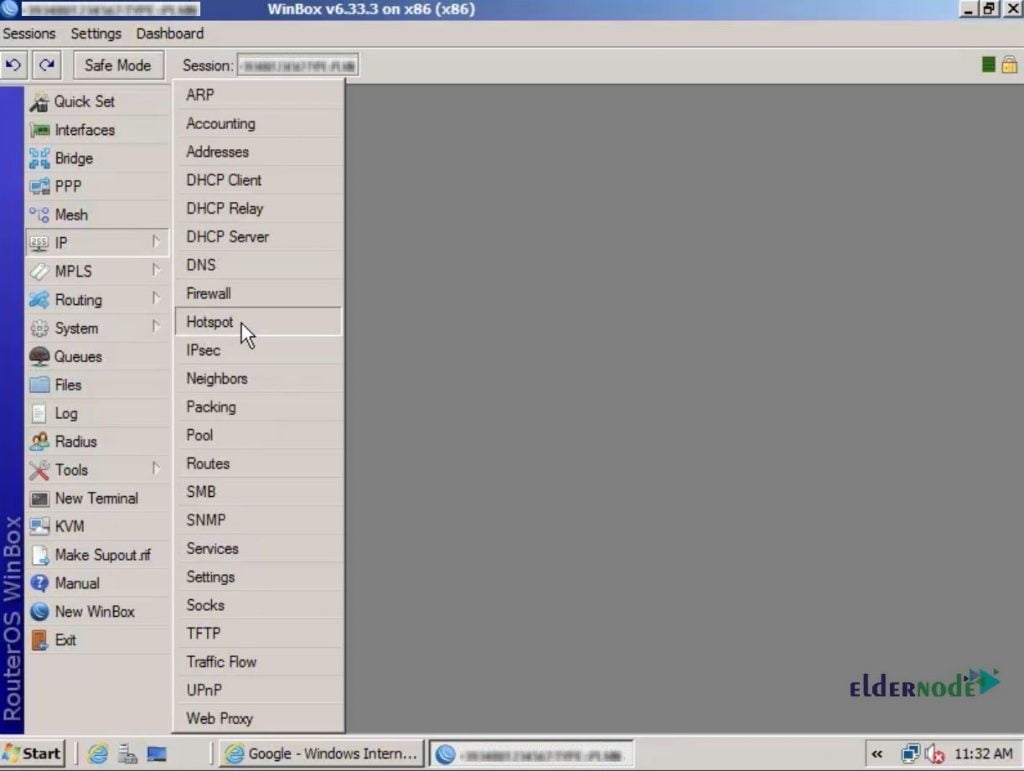
When you choose Hotspot Setup and not the manual mode, it helps you to make sure of keeping access router because you will not miss any important step.
First, you will be asked for the interface you are going to set up the Hotspot on it. So, choose your internal network interface or local interface.
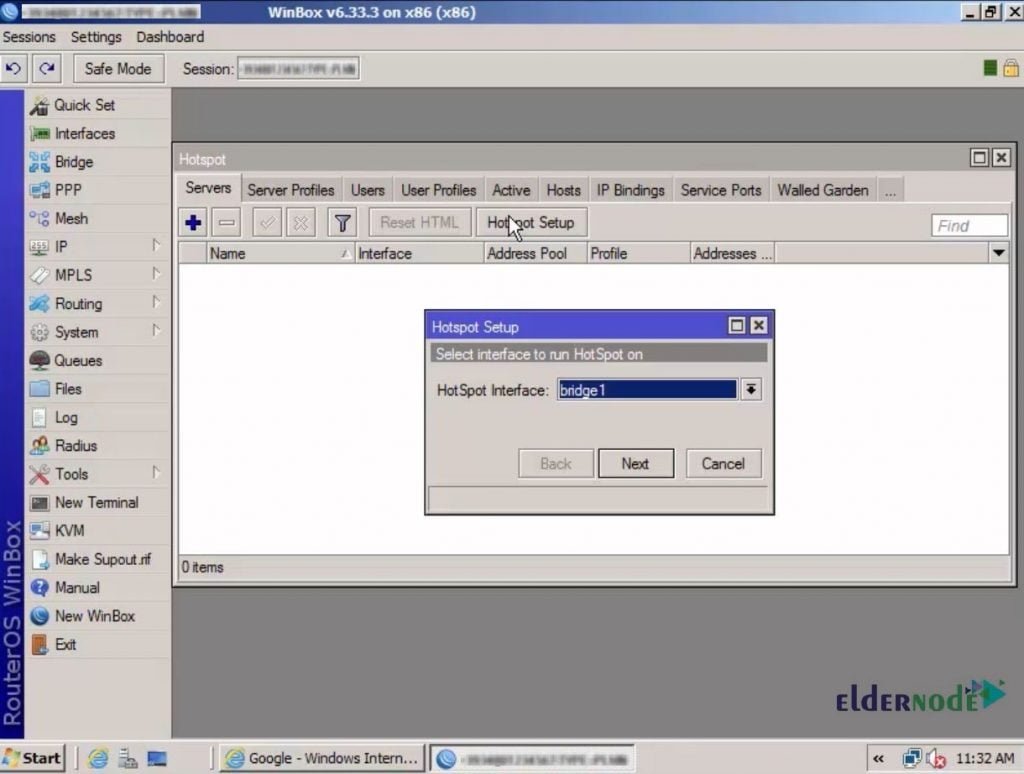
Next, you should enter the Local Address of the Network and by default puts the local interface IP. Here we do not change it. Also, if you prefer to masquerade the Network, mark the cube.
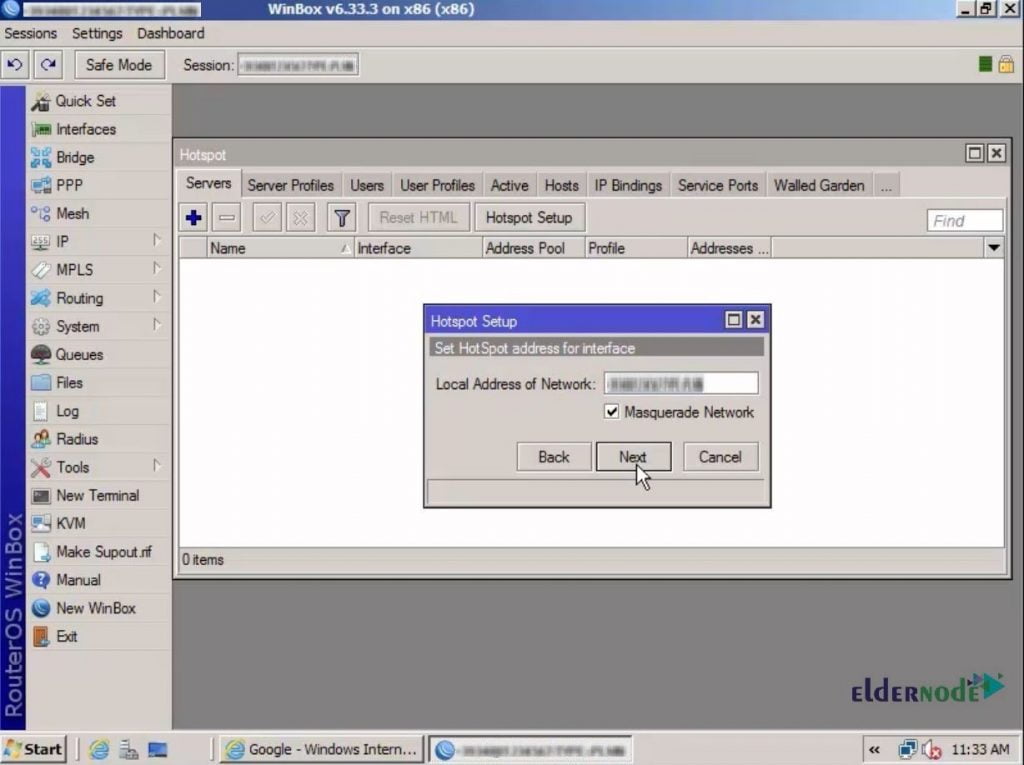
Now, you are asked to set the pool for the Hotspot address.
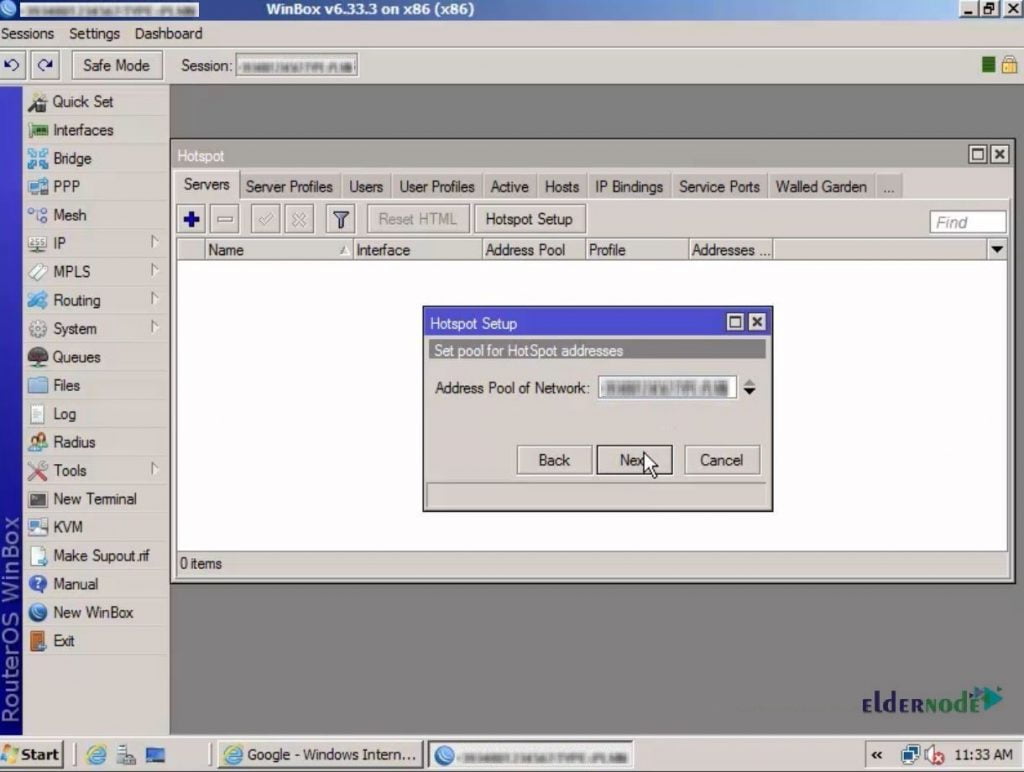
In this step, if you wish to secure the Hotspot with HTTPS, you need the TLS Certificate. If you have TLS Certificate, add it as shown below:
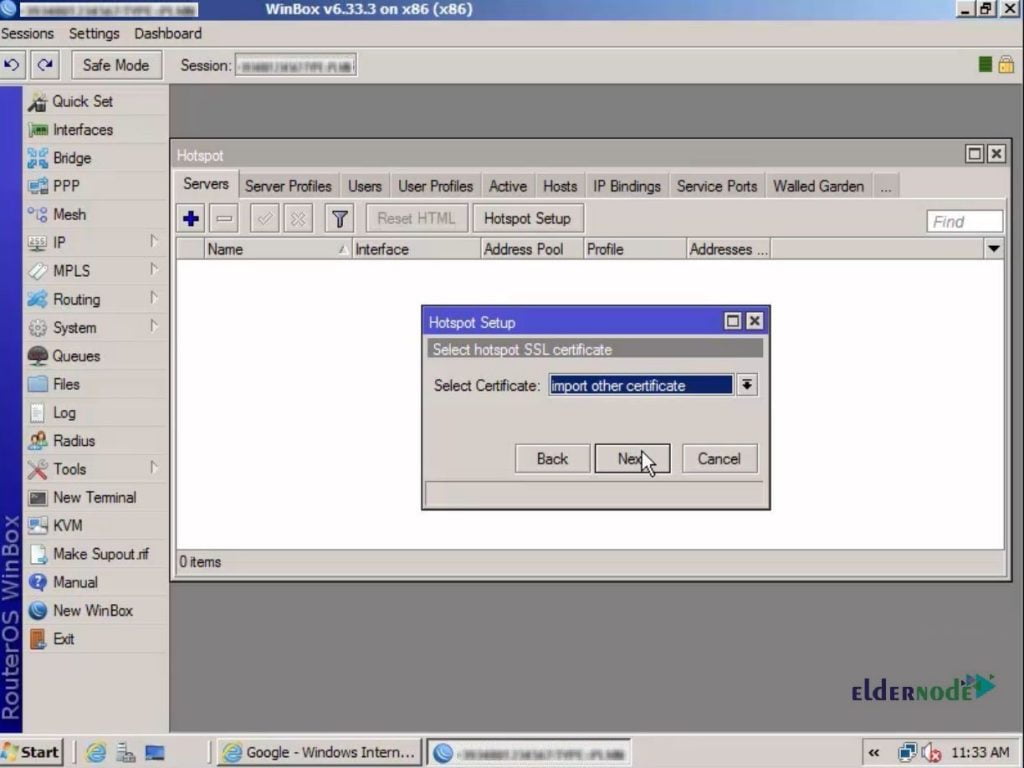
Then, you must add the IP Address of the SMTP Server. In case you have an SMTP Server or Mail Server on your Network, add the address to let all Email requests be redirected on your considered SMTP Server.
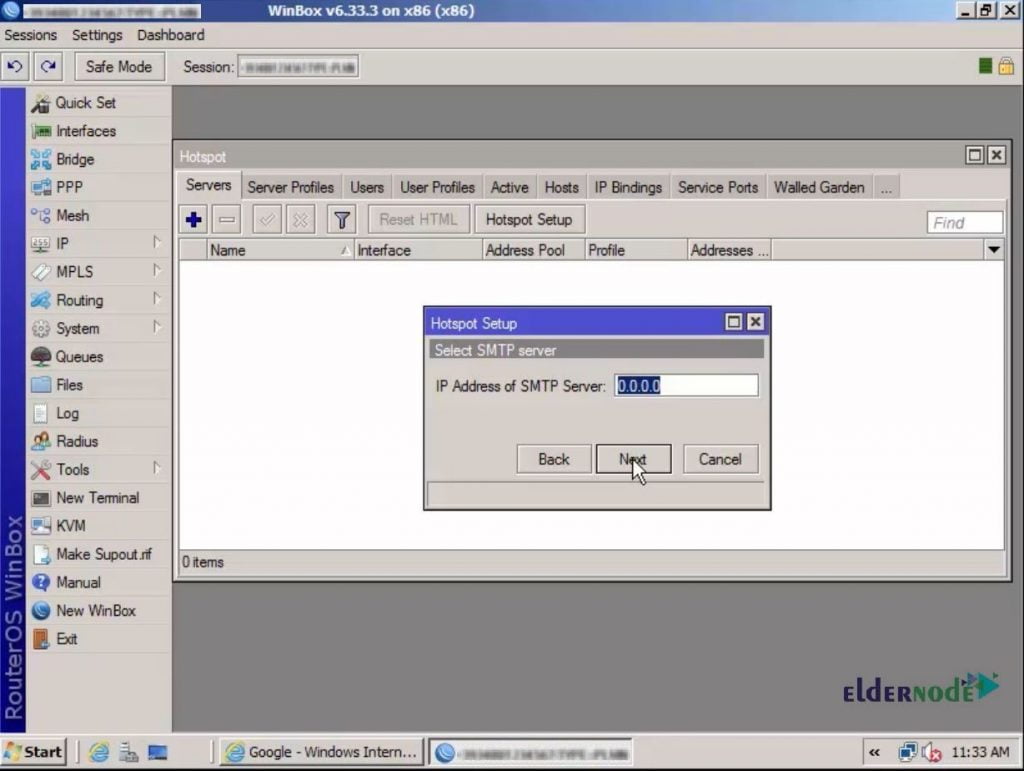
Next, the DNS server is required. The DNS server would be assigned to your Hotspot clients.
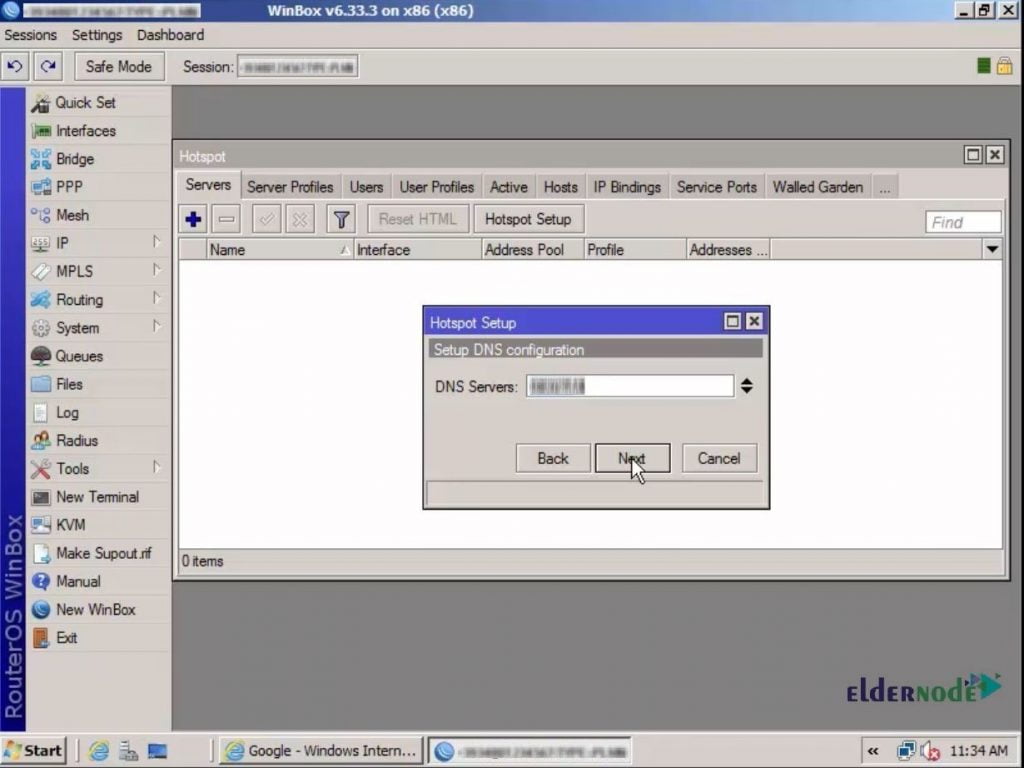
In this step, you will be asked for the DNS name. The Hotspot DNS name should have an FQDN structure.
Note FQDN structure is two sections separated by a dot. For instance: Eldernode.local
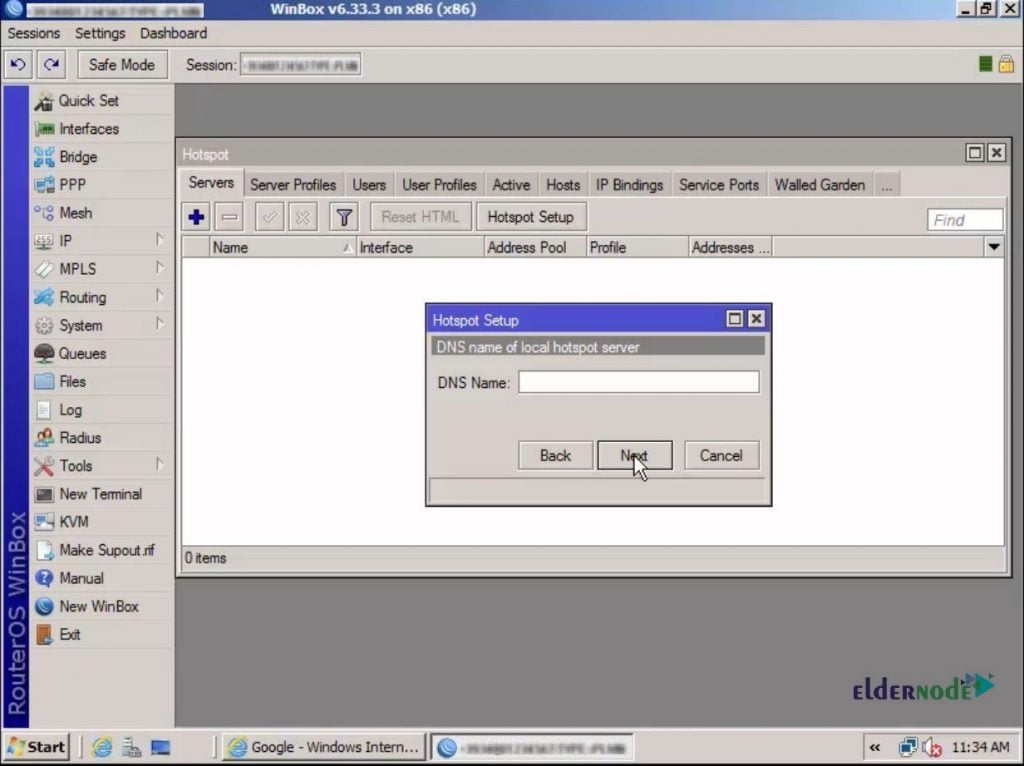
After all, you will add the name of your first local Hotspot user. You can choose anything you wish. By default the name is ”admin” and without a password.
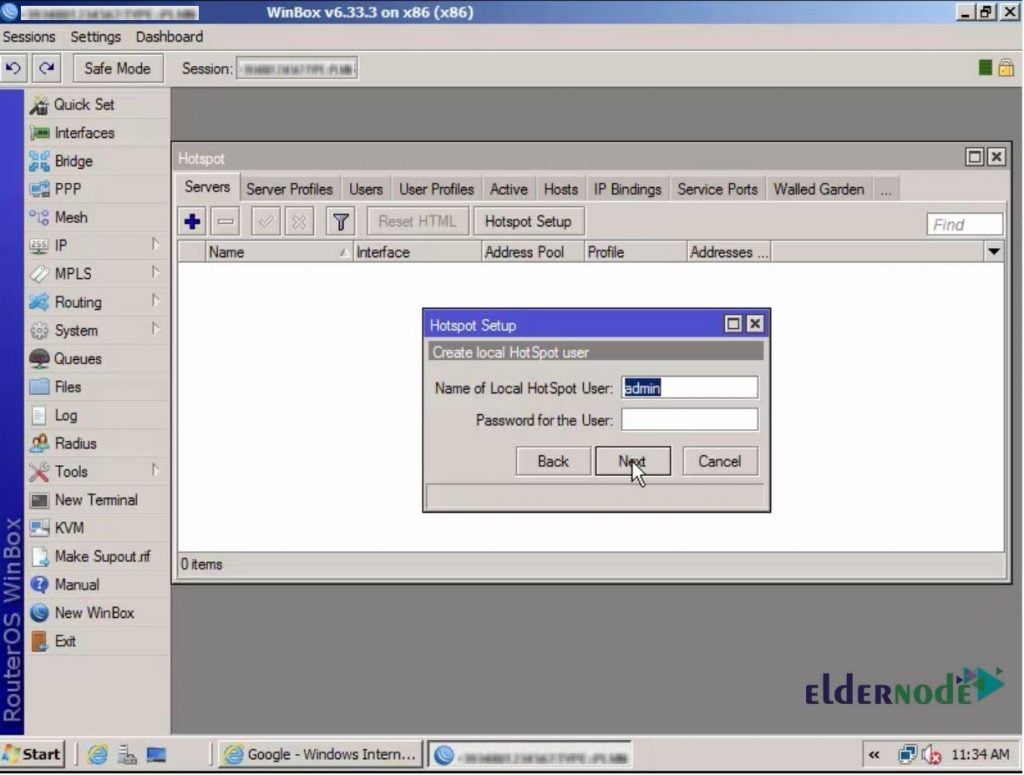
By clicking on the Next button, the Hotspot will be created.
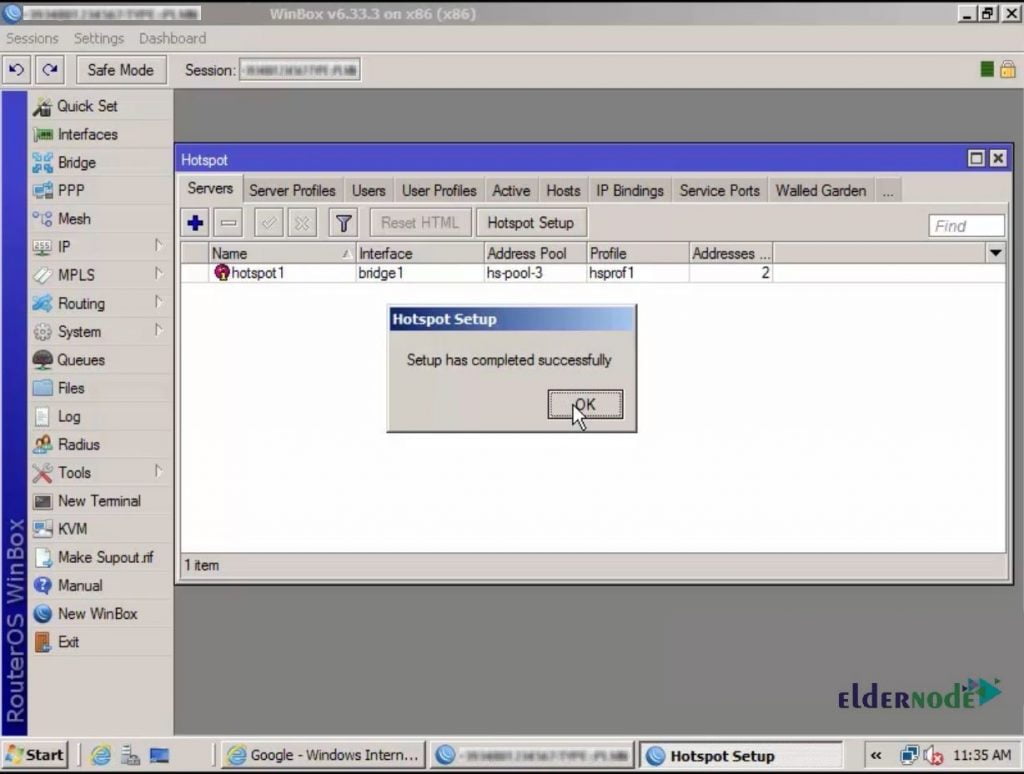
Once the Hotspot is activated, you will no longer access to the internet. So, if you check it, the Hotspot login page will open.
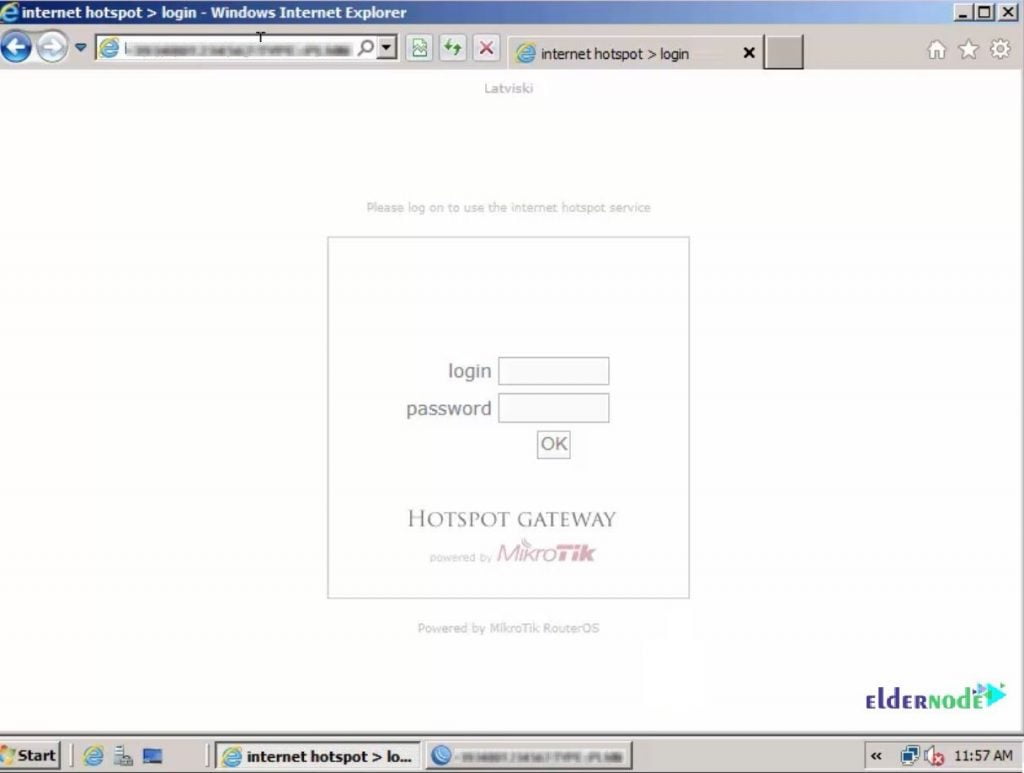
In other words, the access of users through the Hotspot interface will be lost when the Hotspot is created. And they need to be authenticated to access the internet again.
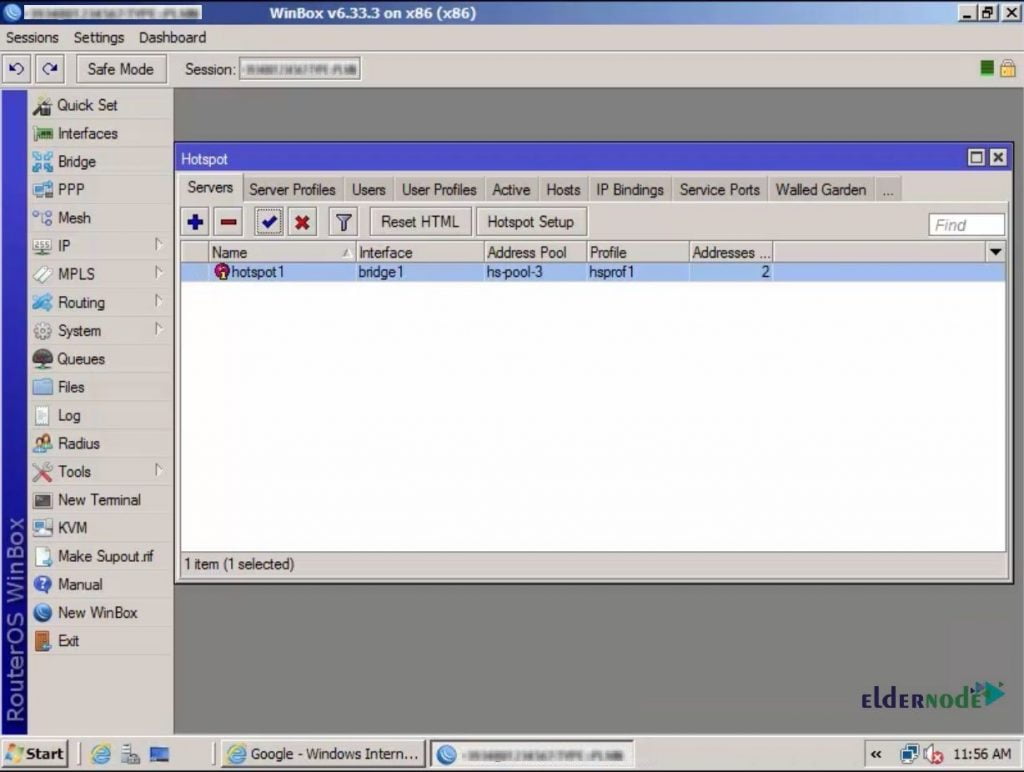
Since the Hotspot is creating, some parts are adding to Setting that you can navigate from the IP option.
IP pool is added dynamically where you can view the range of IP pool address of your Network you have recently chosen.
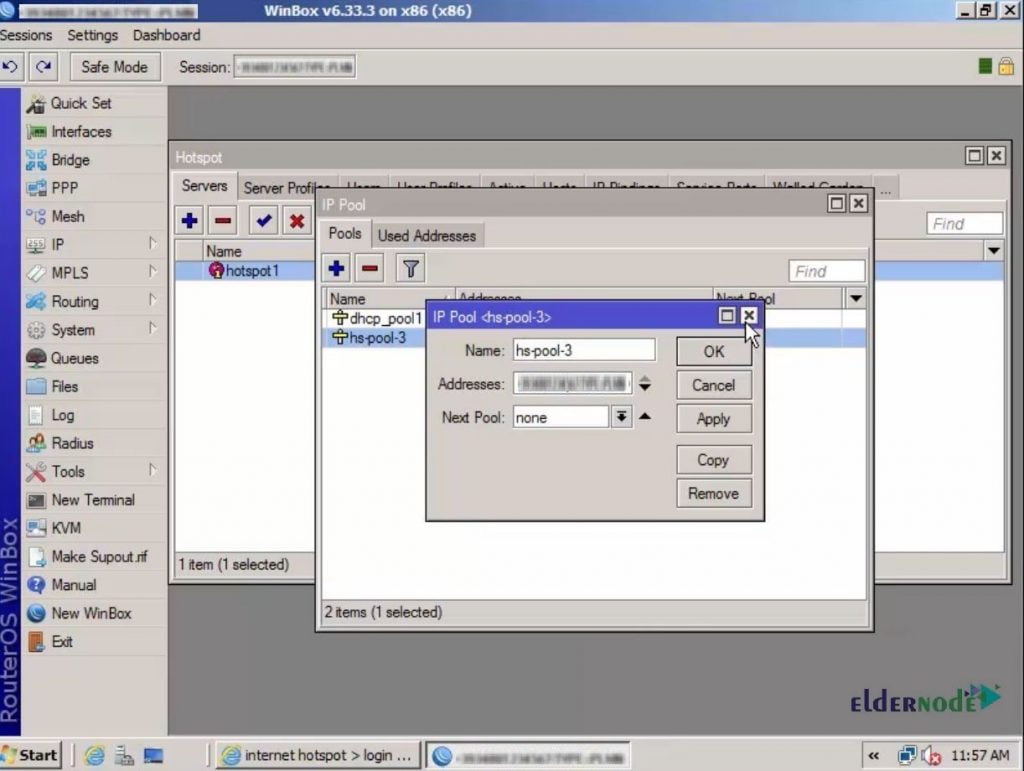
Another additional part is the ”firewall” that some rules are adding into the Filter Rule and NAT tabs dynamically.
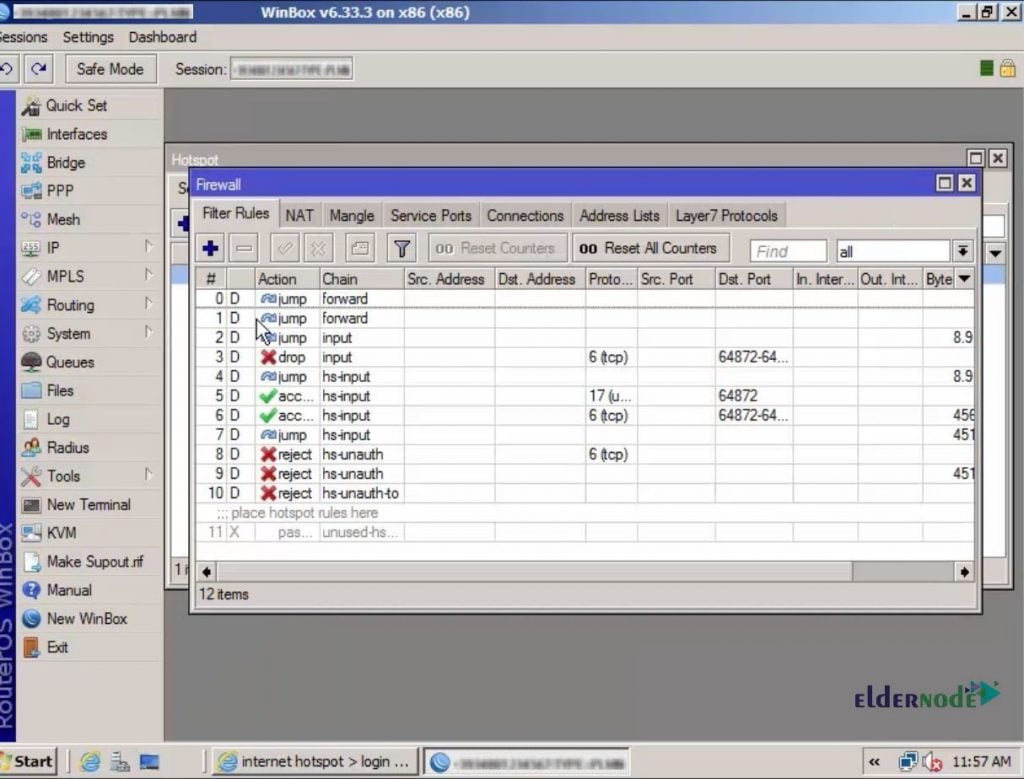
In the Server Profile tab, a profile is creating for the Hotspot.
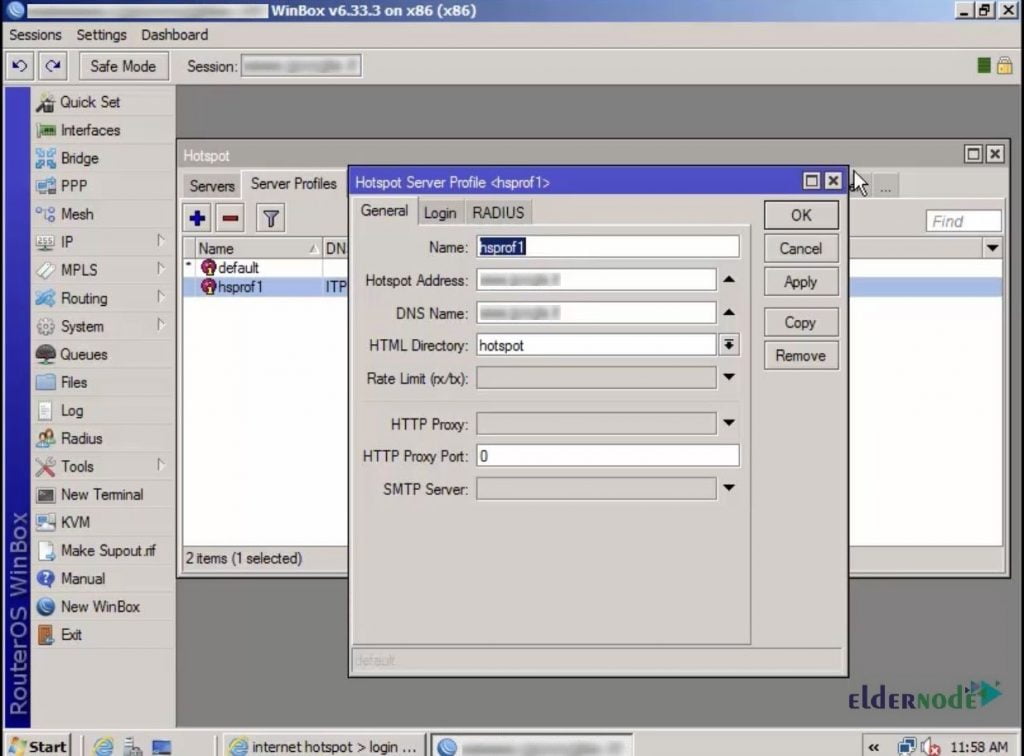
The User tab contains the name of the user. If you have added a name in the related step, you can view it here.
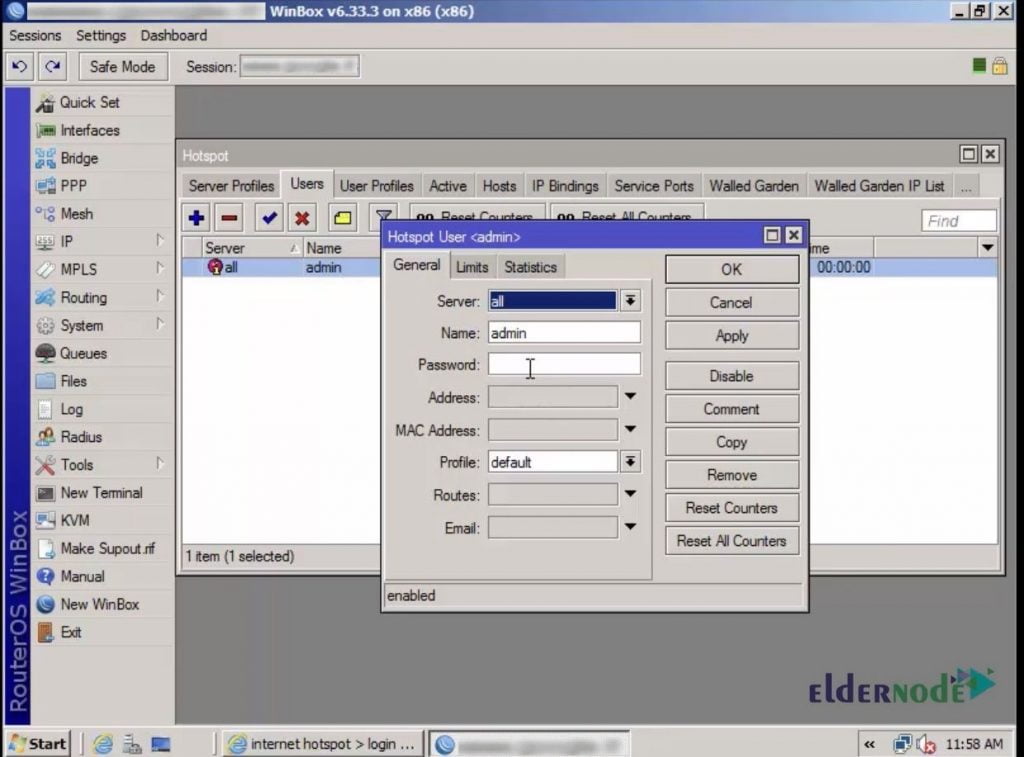
Conclusion
In this article, you learned How To Install And Managing Hotspot on Mikrotik. To learn more, find our related article on How to Update and Backup MikroTik.
